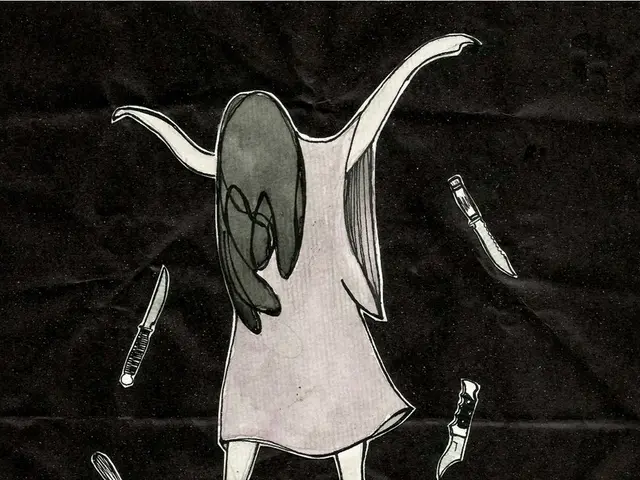Legendary and Lapidary Gem: Bloodstone Unveiled
In this extensive exploration, we delve into the alluring world of bloodstone, a gemstone that has captivated human imagination for centuries. Known for its striking appearance - a deep green canvas adorned with vivid red specks - bloodstone, or heliotrope, is more than a mere decorative stone.
This comprehensive guide unfolds the mysteries surrounding bloodstone, shedding light on its enigmatic origins, ancient legends, and enduring appeal. It is designed to offer a clear and detailed understanding of the bloodstone universe, making it accessible to everyone, from established collectors to those newly drawn to this gemstone.
At a Glance: Bloodstone's Essential Characteristics
- Key Traits: Bloodstone is a dark green, opaque variety of chalcedony, a type of quartz, known for its bold red inclusions.
- Distinct Markings: It is recognized by its striking red spots or larger areas, which are iron oxide deposits that mimic droplets of blood.
- Multiple Names: bloodstone is also referred to as Aggregate Heliotrope, Blood Jasper, and The Martyr's Stone.
- Birthstone Significance: Bloodstone serves as the birthstone for March.
- Medieval Symbolism: Historically known as "the martyr's stone," bloodstone has been incorporated in numerous medieval depictions of Christ.
What is Bloodstone?
Bloodstone, also known as heliotrope, is formed from a dark cryptocrystalline silica mineral containing red spots of hematite. Hematite, a mineral composed of oxidized iron, is renowned for leaving a red streak. Bloodstone's appearance ranges from a slick black to the red and orange hues characteristic of the gemstone.
Its name, "bloodstone," stems from the red spots, which ancient observers believed resembled drops of blood. The classical form of bloodstone is green jasper marked with irregular red spots. It can also exhibit darker shades or be marbled with other jasper colors, such as blue or white.
Bloodstone is valued for its striking beauty and is frequently carved or cut into cabochons. In exceptional cases, skilled lapidaries craft remarkably faceted stones from it.
Superstitions and Legendary Tales Surrounding Bloodstone
The uses of bloodstone expand well beyond the realm of decoration, dating back to Pliny the Elder in the Western world. This signifies over 2,000 years of documented superstitious beliefs concerning the stone, with likely even more unrecorded tale. Pliny the Elder, author of "Naturalis Historia," is credited as creating the first encyclopedia in the Western world. Though his work may now seem somewhat antiquated, it was comprehensively distributed in its time.
Numerous powers have been attributed to heliotrope, including:
- Conferring invisibility upon its bearer.
- Manipulating weather conditions.
- Enabling divination.
- Serving as an amulet for longevity, prosperity, and bravery.
- Acting as a charm against venomous creatures.
- Stemming the flow of blood.
It is essential to note that the classical associations of gems with specific powers vary considerably from modern interpretations, which are primarily based on recent syntheses.
Interestingly, the belief in bloodstone's ability to stop bleeding, predominantly observed in India, has some basis in reality. Hematite, a component of bloodstone, can serve as an astringent when immersed in cold water. However, it is questionable whether the effectiveness of this practice corresponds to modern medical methods.
Nowadays, medical professionals would likely recommend standard wound care methods, such as using gauze, over the use of bloodstone to halt bleeding.
Mythologically, bloodstone is unique due to one specific legend: it was believed in some traditions to be the stone upon which Christ bled when he was pierced with the Spear of Longinus on the Cross. This belief contributed to the stone's reputation as a powerful talisman.
Bloodstone's Physical Properties
Bloodstone shares many similarities with jasper in physical properties. Similar to red jasper, bloodstone obtains its color from oxidized iron deposits, although they are more concentrated in specific areas.
In terms of hardness, bloodstone corresponds to a value of 7 on the Mohs scale, and it has a specific gravity of approximately 2.6. This specific gravity positions bloodstone within the median range of the jasper family, although this can vary slightly depending on the specific type and inclusions present in the stone.
For gemstone enthusiasts and collectors, an essential characteristic of bloodstone is its fine-grained texture. This texture allows it to achieve a high gloss polish, making it much desired for decorative purposes.
In evaluating the base of bloodstone, which can occasionally appear translucent, it is more accurate to describe the matrix containing the hematite as chalcedony instead of jasper.
How Bloodstone Is Formed
Heliotrope, commonly known as bloodstone, is formed in a manner resembling other types of jasper.
The formation process begins with the appearance of nodules in cracks and voids within bedrock over millions of years. Over time, these areas are infiltrated by silica-rich waters, which deposit their minerals. For bloodstone, the green and blue hues are usually due to chloride impurities present in the silica. Sometimes, these colors result from epidote within the chalcedony matrix. Consequently, "bloodstone" is more of a descriptive term than a precise mineral definition.
The characteristic red coloration of bloodstone arises from hematite inclusions. These inclusions are typically well-integrated within the silica, resulting in a relatively uniform surface texture for the stone.
In essence, bloodstone's formation replicates that of other agates and jaspers. What sets it apart is the unusual and unsystematic distribution of impurities, which gives rise to its distinctive spotted appearance.
Finding Bloodstone and Lapidary Tips
Bloodstone, while relatively uncommon due to its specific formation process and sporadic distribution, is not the rarest of stones. A substantial portion of the bloodstone available on the market hails from Brazil. Additionally, it can be found in various locations across the United States.
Besides Brazil, bloodstone deposits are located in countries like Australia and Germany.
In the United States, California hosts the most frequent bloodstone deposits. While the distribution of bloodstone may seem surprisingly broad, deposits are particularly concentrated in Northern California and Oregon.
Bloodstone is an excellent material for lapidary work due to its diverse appearance. When cutting a nodule open, for example with a slab saw, one might discover intriguing surprises like white opal or chalcedony, which add to the stone's visual appeal.
If you have experience working with jasper, you will find bloodstone comparable to handling that material. The recommended approach involves using diamond tools and progressively finer grits, up to about 1200, before applying the final polish. For polishing stones with hardness ratings of 6.5 to 7.5, I prefer using cerium oxide, which works exceptionally well with bloodstone.
One challenge you may encounter is undercutting, which manifests as pitting during the stone's progression through various grits. This is usually due to sections of hematite within the stone that aren't fully silicified, making them softer than the surrounding chalcedony or jasper.
To minimize undercutting, a lighter touch on the grinding wheels or tools is recommended. It may take some experimentation to determine the right pressure for each piece. Using resin-based "soft" wheels can also be beneficial.
Bloodstone's unpredictability makes it an exciting choice for three-dimensional carvings. The underlying color pattern is often a surprise, leading to unique visual effects as the stone is worked.
When selecting rough bloodstone, pay attention to the orange spots. If they seem delicate or powdery, they may undercut during the cutting process. Generally, high-quality rough bloodstone does not present any issues and can be cut like any other homogenous material.
Bloodstone has long been a favorite among lapidaries. Once you complete your first cabochon, you will likely appreciate its lasting appeal.
In this detailed exploration, we delve into the realms of technology and science, discussing the fascinating gemstone known as bloodstone. This guide presents insights on bloodstone's essential characteristics, physical properties, and formation process, making it a valuable resource for both enthusiasts and experts.
Moreover, we touch upon the intersection of bloodstone and medical conditions, delving into its ancient belief to stem bleeding, which has some basis in reality due to the astringent properties of hematite, a component of bloodstone. Interestingly, modern medical professionals would likely advise standard wound care methods over the use of bloodstone to halt bleeding.
Lastly, we highlight the numerous ways technology plays a role in the exploration, mining, and lapidary work with bloodstone, including the use of diamond tools, slab saws, and polishing with cerium oxide. Moreover, the unpredictability of bloodstone during carving processes introduces an element of excitement for three-dimensional carvers.
Thus, this comprehensive exploration of bloodstone not only uncovers the mysteries of this captivating gemstone but also highlights its connection with technology, science, and medical conditions, offering a unique perspective on this remarkable stone.




